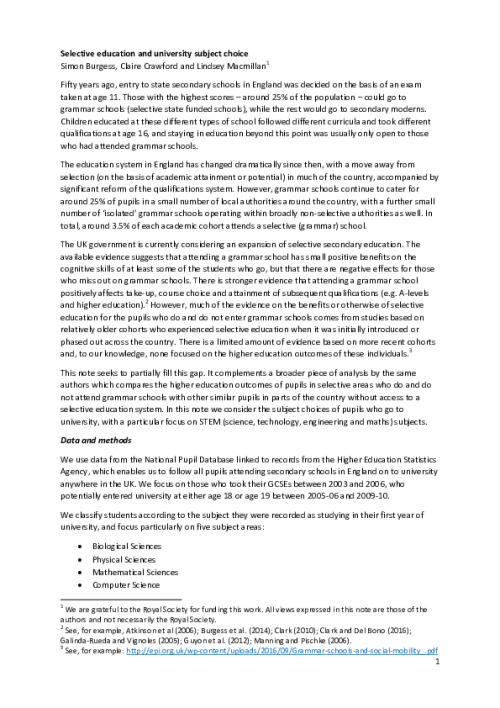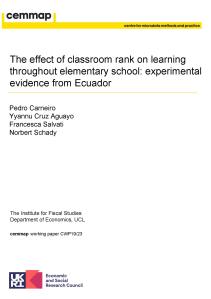Fifty years ago, entry to state secondary schools in England was decided on the basis of an exam taken at age 11. Those with the highest scores – around 25% of the population – could go to grammar schools (selective state funded schools), while the rest would go to secondary moderns. Children educated at these different types of school followed different curricula and took different qualifications at age 16, and staying in education beyond this point was usually only open to those who had attended grammar schools.
The education system in England has changed dramatically since then, with a move away from selection (on the basis of academic attainment or potential) in much of the country, accompanied by significant reform of the qualifications system. However, grammar schools continue to cater for around 25% of pupils in a small number of local authorities around the country, with a further small number of ‘isolated’ grammar schools operating within broadly non-selective authorities as well. In total, around 3.5% of each academic cohort attends a selective (grammar) school.
The UK government is currently considering an expansion of selective secondary education. The available evidence suggests that attending a grammar school has small positive benefits on the cognitive skills of at least some of the students who go, but that there are negative effects for those who miss out on grammar schools. There is stronger evidence that attending a grammar school positively affects take-up, course choice and attainment of subsequent qualifications (e.g. A-levels and higher education). However, much of the evidence on the benefits or otherwise of selective education for the pupils who do and do not enter grammar schools comes from studies based on relatively older cohorts who experienced selective education when it was initially introduced or phased out across the country. There is a limited amount of evidence based on more recent cohorts and, to our knowledge, none focused on the higher education outcomes of these individuals.
This note seeks to partially fill this gap. It complements a broader piece of analysis by the same authors which compares the higher education outcomes of pupils in selective areas who do and do not attend grammar schools with other similar pupils in parts of the country without access to a selective education system. In this note we consider the subject choices of pupils who go to university, with a particular focus on STEM (science, technology, engineering and maths) subjects.











